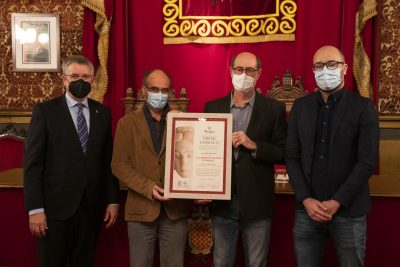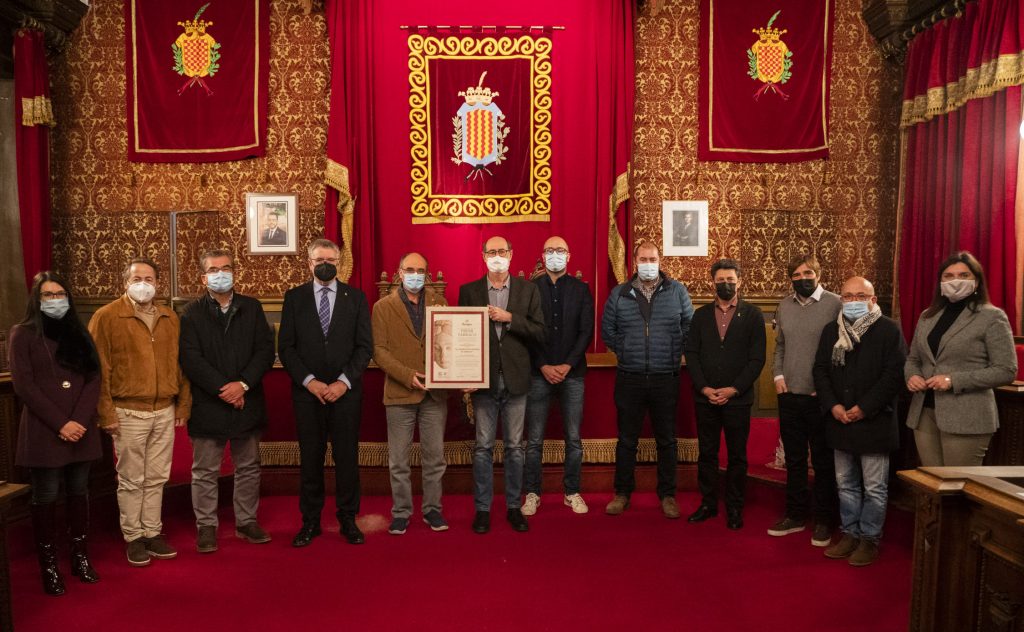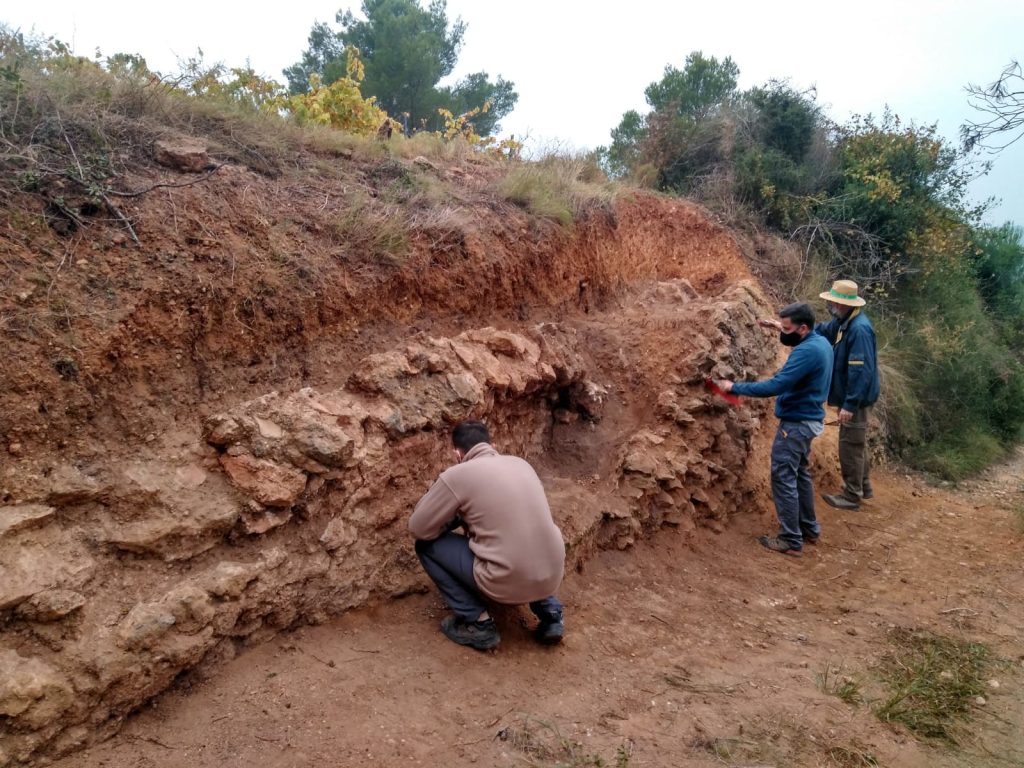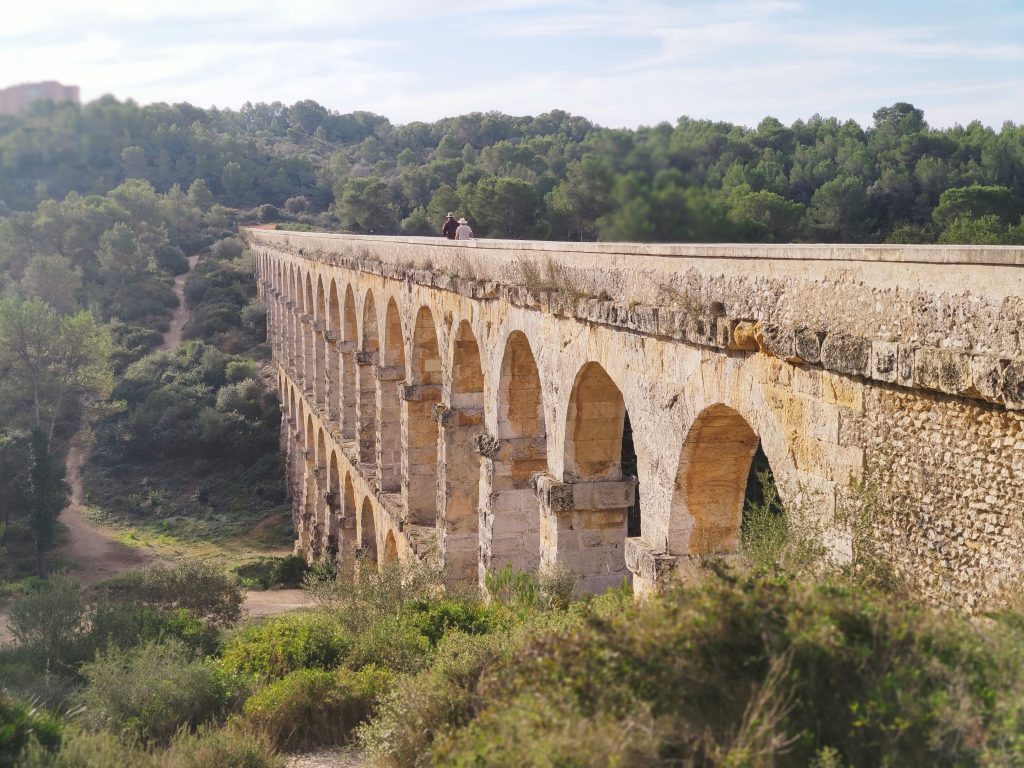
The ICAC research project on the Roman aqueducts of Tarraco, led by Jordi López Vilar, has been awarded by the Tarragona City Council with the Tarraco Award, in recognition of its work in publicizing this important piece of the archaeological site of Tarraco.
Tarragona City Council welcomed November 30, 2021, the XI Tarraco Award event, on the day of the 21st anniversary of the Tarraco Declaration of World Heritage. The Mayor of Tarragona, Pau Ricomà, wanted to recognize the research team on the Roman aqueducts of Tarraco.
This award distinguishes those actions that allow the conservation, preservation, and dissemination of the city heritage, both those that refer to the Roman historical complex and the other tangible and intangible universal heritage sites recognized by UNESCO in Tarragona.
Knowledge of the hydraulic network of Roman Tarragona before starting the ICAC project led by Jordi López Vilar was precarious
The main purpose of the project was to locate, describe and map in detail each visible section of the aqueducts, define their layout, and draw up a document that would allow their real protection and their future enhancement. The state of knowledge of this hydraulic work was quite precarious since its course is imprecise in many places.
With this award, the city of Tarragona wants to recognize the work of the human team behind this project and recognize the work of the Catalan Institute of Classical Archaeology with its contribution to the generation of scientific knowledge and in its actions favouring heritage.
Knowing how our ancestors coped with water scarcity is a major issue
In his speech, Jordi López Vilar wanted to thank the distinction and to mention the human team involved in the project, as well as the collaboration and funding of the institutions that have made it possible. As López explained, “water is one of the most valuable resources everywhere, and especially in the Mediterranean region, which has traditionally faced the vital issue of access. Knowing how our ancestors coped with water scarcity is a major issue”.

The award-winning project aims to contribute to the real and future protection of the Roman aqueducts of Tarraco
Two millennia ago, Romans built great hydraulic infrastructure for the first time in Spain. The remains of this valuable cultural heritage related to collective water are scattered throughout the Camp de Tarragona area, composing a mosaic that has contributed to the configuration of the landscape
However, knowledge of the hydraulic network of Roman Tarragona before starting the ICAC project led by Jordi López Vilar was really precarious. We only knew of the approximate layout of two aqueducts and some specific sections, especially those closest to the city of Tarragona. This widespread ignorance has led to such a lack of protection that in the last 40 years hundreds of meters have been snatched uncontrollably in forest clearings, major infrastructure works, housing developments, etc. This destruction has led to a loss of scientific information and archaeological heritage.
Therefore, the main objective of the project was to locate, describe and map in detail each and every visible section of the aqueducts, define their layout and prepare a document that would allow their real protection and future enhancement.

Archaeological work is been carried out by a multidisciplinary team made up of ten people who belong to different institutions: the Catalan Institute of Classical Archeology, the Rovira i Virgili University, and the Autonomous University of Barcelona. Jordi López especially wanted to highlight the work done by Josep Zaragoza, Joan Canela and Anna Gutiérrez Garcia-Moreno in the archaeological surveys, Josep Maria Puche in the complex topographic work, and Lluís Casas in the analytics. EMATSA, the Royal Archaeological Society of Tarragona, and the Gaià Study Center have also collaborated on the project.
Funding: Consorci d’Aigües de Tarragona, Fundació Privada Mútua Catalana, Secuita City Council, Els Pallaresos City Council, Generalitat de Catalunya.

El projecte Els aqüeductes romans de Tàrraco (Projecte Quadriennal, Generalitat de Catalunya, CLT009/18/00098) està dirigit per Jordi López Vilar, investigador de l’ICAC, i està finançat pel Consorci d’Aigües de Tarragona, l’Institut Català d’Arqueologia Clàssica, la Fundació Privada Mútua Catalana, l’Ajuntament dels Pallaresos i la Generalitat de Catalunya.
Notícies relacionades:
«Investigadors de l’ICAC identifiquen el primitiu aqüeducte de Tàrraco, que duia l’aigua del riu Francolí sense necessitat del Pont de les Ferreres», ICAC, 11 de novembre de 2021.
«Possible forn romà relacionat amb la construcció de l’aqüeducte romà del Francolí», ICAC, 3 de maig de 2021.
«Comencen les prospeccions arqueològiques a l’aqüeducte romà del Francolí», ICAC, 22 de març de 2021.
«Els romans captaven aigua a Puigpelat, a més del riu Gaià. Les noves excavacions confirmen la connexió de dos aqüeductes diferents», ICAC, 14 de gener de 2021.
«Posem al descobert un nou tram de l’aqüeducte del Gaià al terme dels Pallaresos», ICAC, 15 de novembre de 2019.
«Nou projecte de recerca per a localitzar i documentar l’aqüeducte del Gaià, el més gran construït pels romans a Catalunya», ICAC, 7 de juny de 2019.
«Els alcaldes del Gaià i l’ICAC s’uneixen per estudiar els aqüeductes romans», ICAC, 23 de febrer de 2018.









